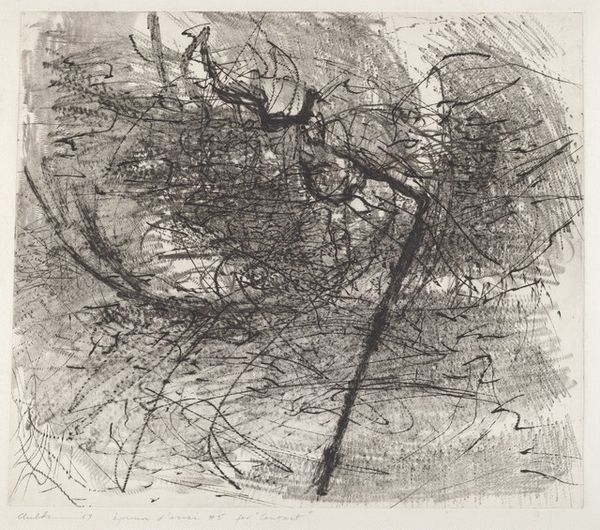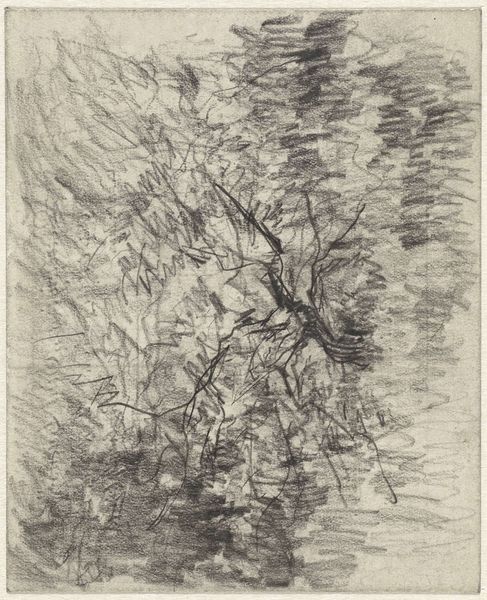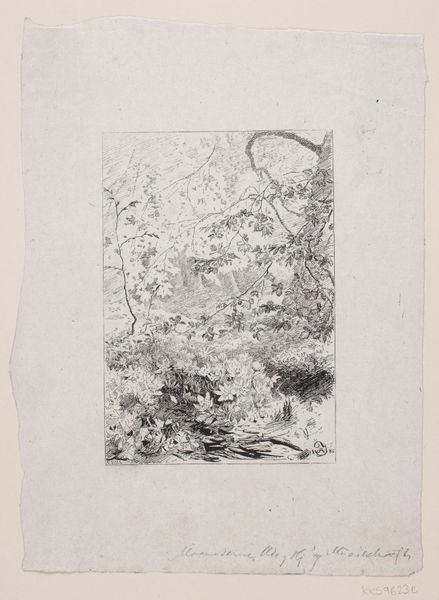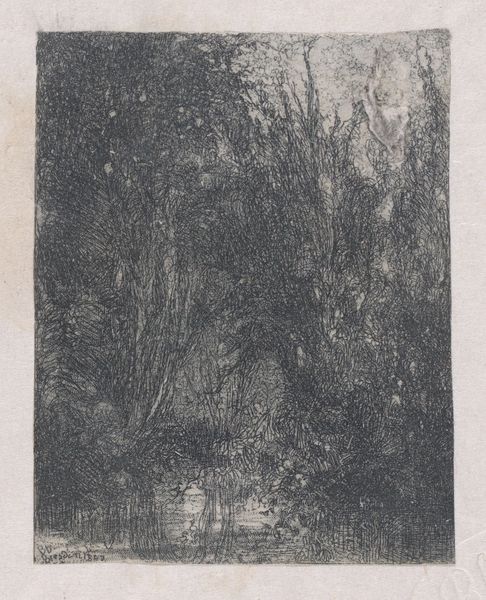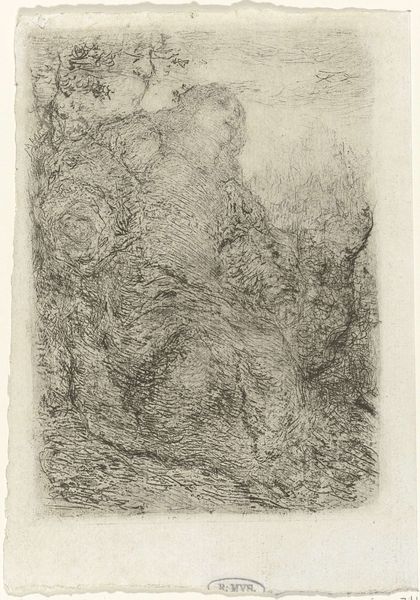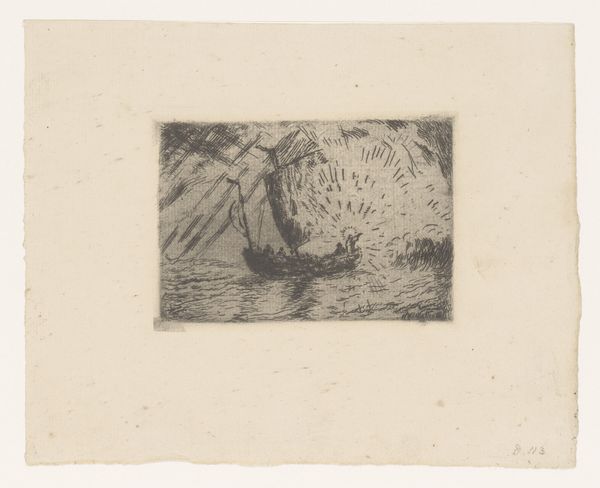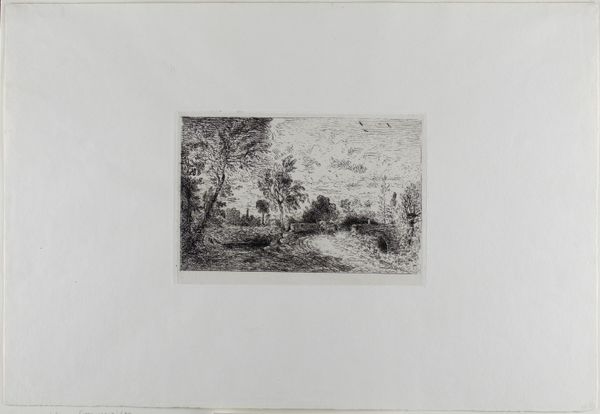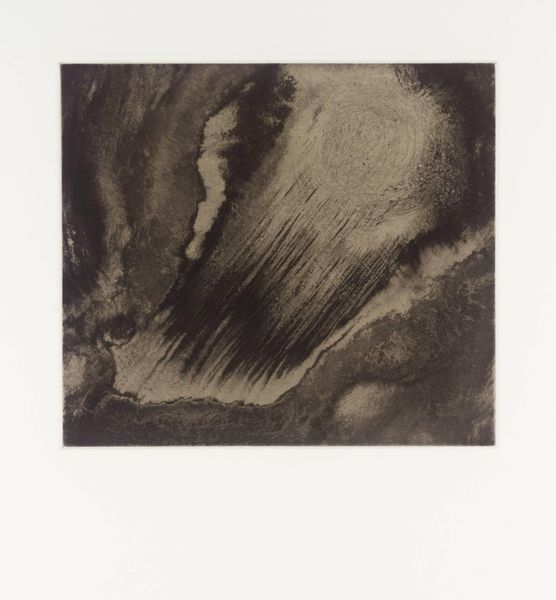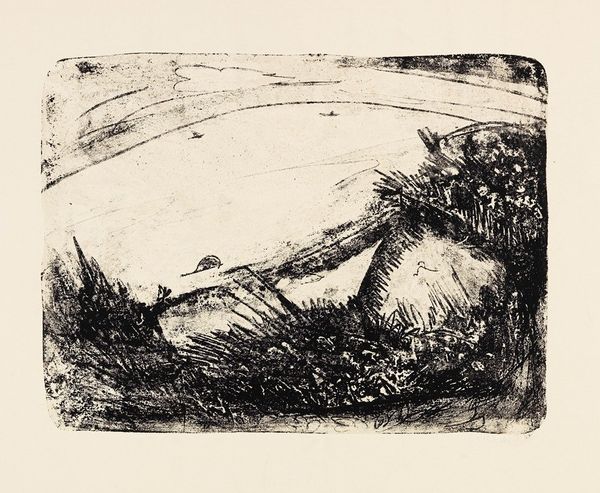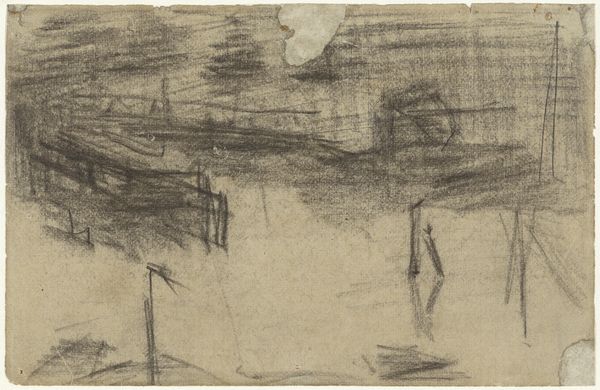
drawing, print, woodcut
#
drawing
# print
#
landscape
#
expressionism
#
woodcut
Copyright: Public Domain: Artvee
Editor: So, here we have Ernst Ludwig Kirchner's "Berghang mit Ziegen," created around 1920. It's a woodcut print, and there's a fascinating raw energy to the lines. How would you interpret this work? Curator: From a materialist perspective, it's essential to consider the choice of woodcut itself. It's a laborious process, requiring physical engagement with the material. The gouges and scrapes made in the wood directly inform the aesthetic. Kirchner is making a deliberate choice, highlighting the labor involved in art creation, almost like an early form of land art but made by gouging the land of the block. Editor: So the rough texture isn’t accidental? Curator: Not at all! The rough hewn aesthetic serves a specific purpose, distancing itself from refined art traditions and suggesting a more elemental, primal engagement with the subject, connecting the work to land-based work. Also, consider the wood itself—where did it come from? What kind of labor was involved in sourcing and preparing it? Editor: That’s a perspective I hadn't considered. I was thinking more about the subject—the goats on the hillside. Curator: But the ‘goatness’ is directly affected by the physical production process. Are the animals really recognizable without context clues? Isn't the process creating an 'every-animal' rather than a particular goat? What did printing mean for distributing and even selling works at this time? How many prints are in existence, and how does that impact the value and dissemination of this piece? Editor: So, looking at it as a consumer object as much as a piece of art? Curator: Exactly. The intersection of material, labor, and consumption are essential in understanding this print's place in the art world and society. It questions those clear lines. Editor: Wow, I never thought of it that way. I always saw the Expressionists as focusing on emotion, but this connects it to the real world and even, economics. Curator: Right. Expressionism itself becomes a product, shaped by material conditions and processes. Considering these aspects allows us to understand the artwork beyond pure aesthetics, and examine its role in a wider cultural context.
Comments
No comments
Be the first to comment and join the conversation on the ultimate creative platform.

